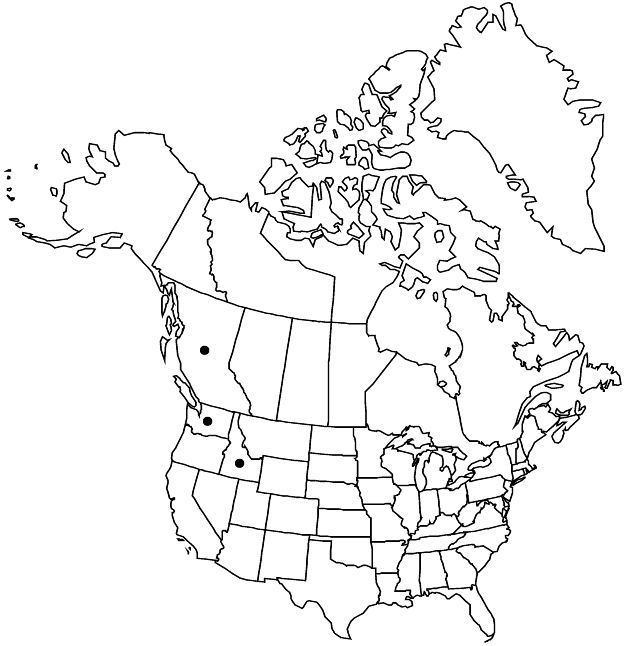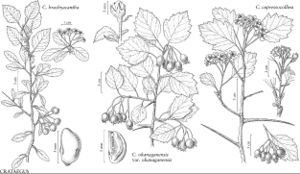Difference between revisions of "Crataegus okanaganensis var. okanaganensis"
imported>Volume Importer |
imported>Volume Importer |
||
| Line 49: | Line 49: | ||
|publication year= | |publication year= | ||
|special status=Illustrated;Endemic | |special status=Illustrated;Endemic | ||
| − | |source xml=https:// | + | |source xml=https://bitbucket.org/aafc-mbb/fna-data-curation/src/2e0870ddd59836b60bcf96646a41e87ea5a5943a/coarse_grained_fna_xml/V9/V9_848.xml |
|subfamily=Rosaceae subfam. Amygdaloideae | |subfamily=Rosaceae subfam. Amygdaloideae | ||
|tribe=Rosaceae tribe Gillenieae | |tribe=Rosaceae tribe Gillenieae | ||
Latest revision as of 23:59, 5 November 2020
Leaves ± bronze in fall; blade ± ovate to ovate-rhombic, lobes well defined. Pomes pendent, ovoid.
Phenology: Flowering May; fruiting late Aug–Sep.
Habitat: Natural hedgerows and mesic brush, mainly in valley bottoms
Elevation: 400–700 m
Distribution

B.C., Idaho, Wash.
Discussion
Variety okanaganensis is somewhat like Crataegus williamsii of northwestern Montana both in leaf shape and fruit shape, but it has glossier, more coriaceous leaves with the color often yellowish green in mid season, the blades proportionately wider, usually with less acute lobes, stouter thorns, different anther color, and a different fruiting calyx. The young fruit is brilliant red when C. williamsii is usually a pale to deeper dull red; mature fruits are deep purple instead of blood or deep red. Northern Idaho specimens of C. okanaganensis flower about a week before C. williamsii in northwestern Montana. Apparent intermediates with var. wellsii occur.
Selected References
None.
